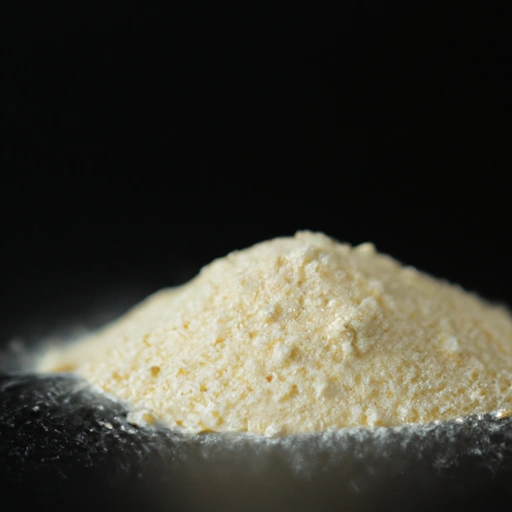Semolina
Description

Semolina is a coarse, purified wheat middling of durum wheat mainly used in making pasta and bread. It has a distinctive yellow color and a slightly sweet, earthy flavor. Semolina is rich in gluten, which gives it a high elasticity and holds its shape well when cooked, making it ideal for pasta and structured baked goods. In recipes, semolina measurements can be provided in ounces (oz), grams (g), cups (American), or milliliters (ml) for liquids. For instance, a typical pasta recipe might call for 200 grams or about 7 ounces of semolina, which is roughly equivalent to 0.85 cups in American units.
Common uses
Semolina is commonly used in the making of pasta, bread, couscous, and as a base for sweet desserts like puddings and halva. It can also be used as a thickener in soups and stews or as a base for savory dishes such as gnocchi and polenta.
Nutritional value
Calories
A 100g serving of semolina contains approximately 360 calories.
Protein
Semolina is high in protein, offering about 13g per 100g serving.
Fat
Semolina is low in fat, with around 1.5g per 100g serving.
Carbohydrates
It is rich in carbohydrates, mainly complex carbs, with about 72g per 100g serving.
Vitamins
Semolina contains several B vitamins, including thiamine and folate.
Minerals
It is a good source of minerals such as iron, magnesium, phosphorus, and zinc.
Health benefits
Semolina's high protein and fiber content contribute to satiety and can aid in weight management. The B vitamins present in semolina help in energy metabolism, while the minerals support various bodily functions, including the immune system and bone health.
Potential risks
As a gluten-containing product, semolina is not suitable for individuals with celiac disease or gluten sensitivity. Overconsumption can also contribute to excessive calorie intake, potentially leading to weight gain.
Common recipes
Semolina is used in a variety of recipes such as pastas like spaghetti, penne, and macaroni, as well as in breads, pizza crusts, and desserts like semolina cake and Indian sooji halwa.
Cooking methods
Cooking methods include boiling, baking, and frying, depending on the recipe.
Pairing with other ingredients
Semolina pairs well with tomato-based sauces, dairy like cheese and yogurt, and is often complemented by herbs and spices such as basil, oregano, and cinnamon.
Summary
Semolina is a versatile ingredient derived from durum wheat, widely used in making pasta and bread. It offers nutritional benefits including protein and minerals, making it a valuable component of various diets. However, due to its gluten content, it is not suitable for everyone. Semolina's culinary applications are vast and include traditional and modern recipes from around the world.